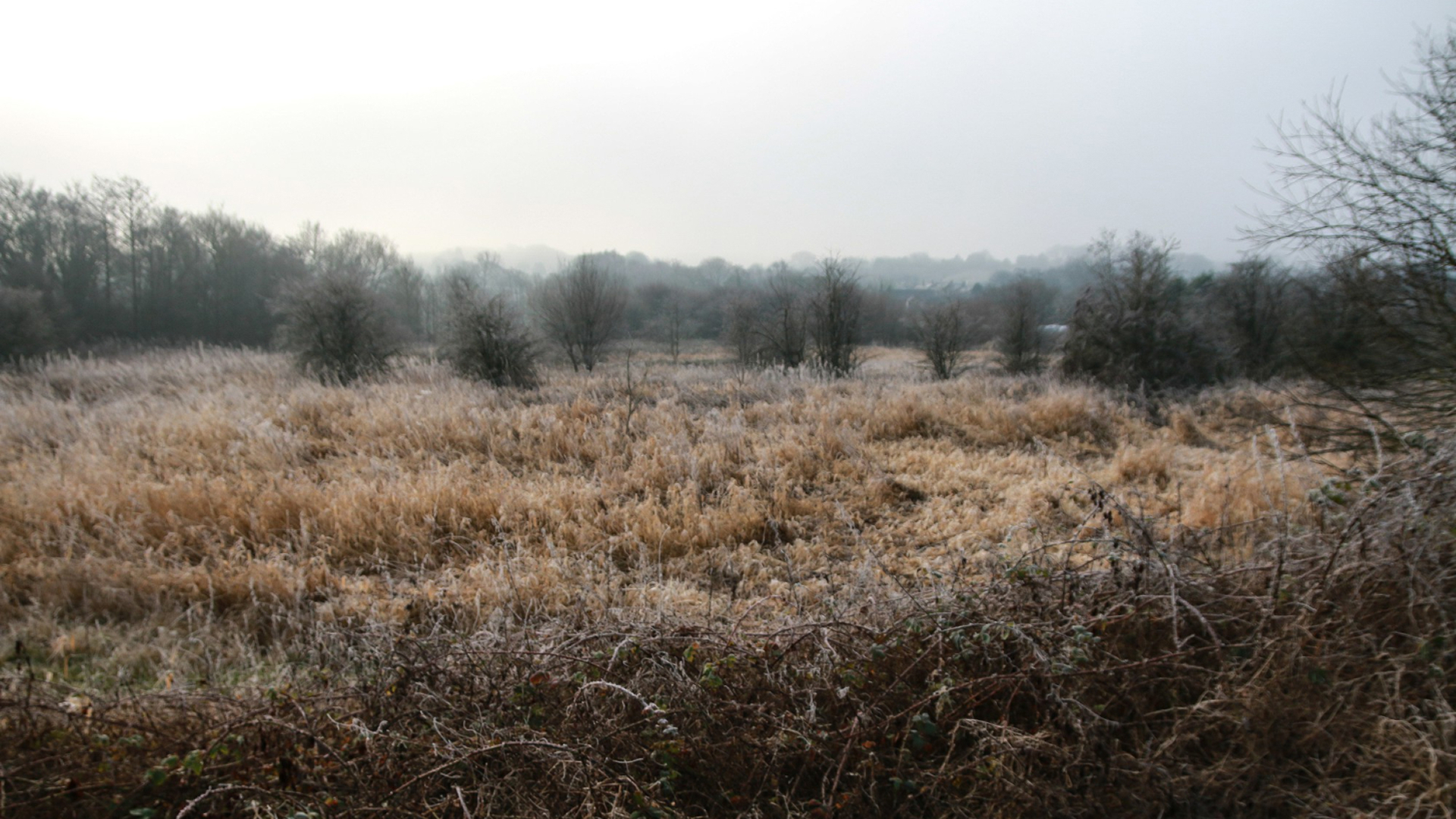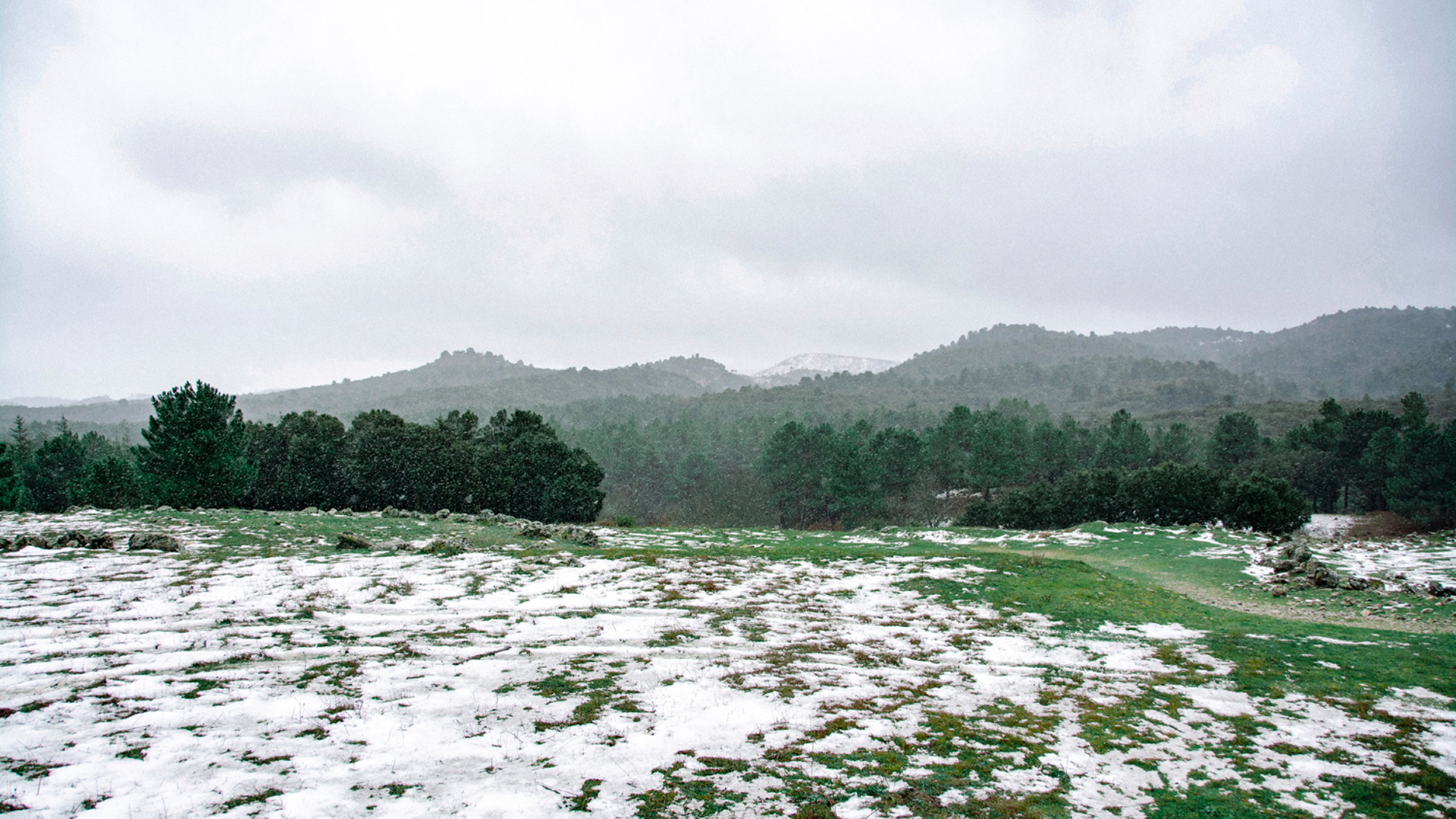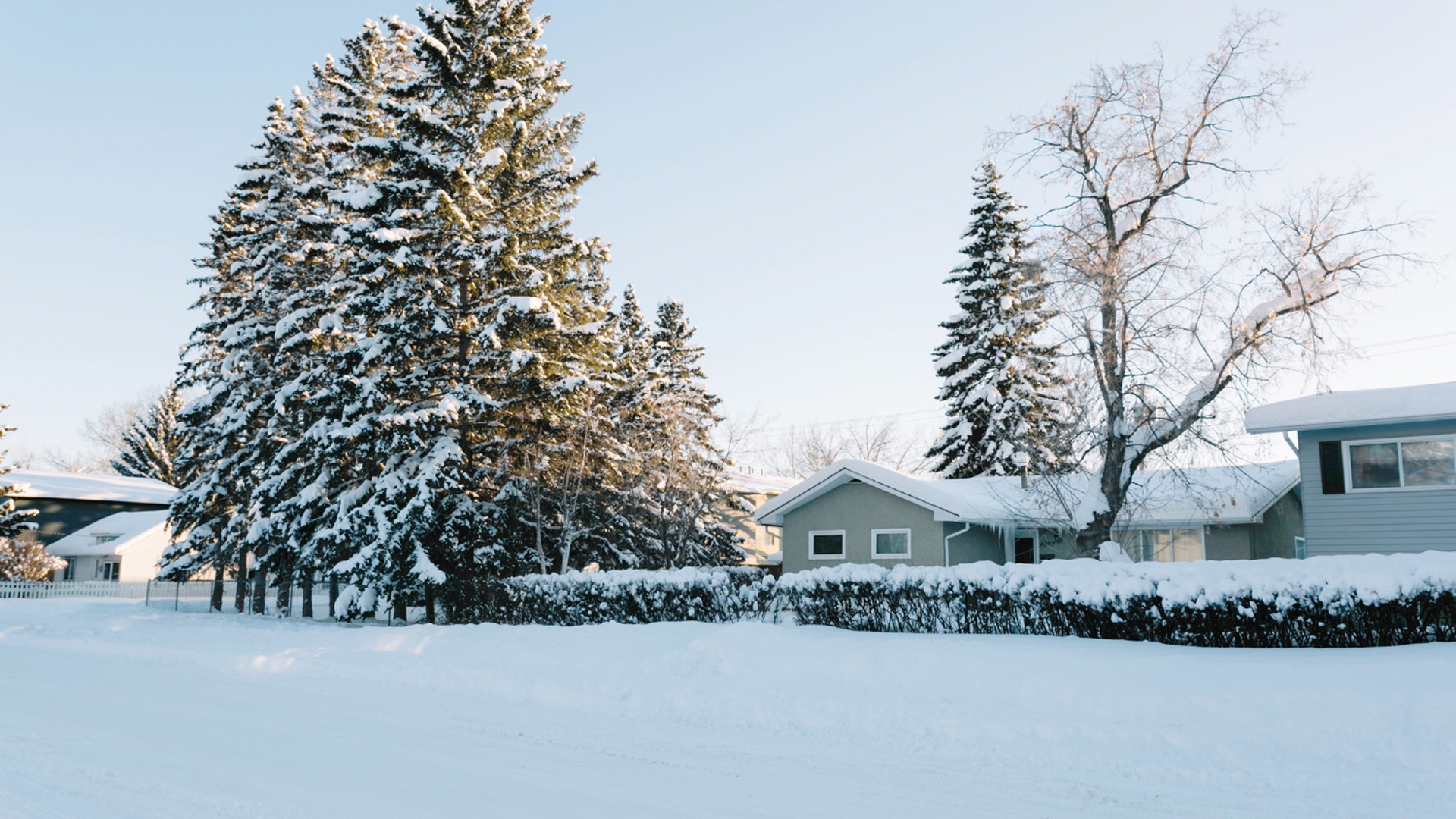Most lawns lose their color once winter hits. But that doesn't mean yours has to. We know how discouraging it can feel to watch your lawn fade each year, especially when you take pride in your home but may not have extra hours or specialist tools for maintenance.
If your grass fades to brown every year, the issue may not be your lawn; it may be how you're preparing it for the colder months. Warm-season grasses, such as Bermuda grass, go dormant once it starts getting chilly. That's natural.
However, with proper care, your yard can remain lush and green. This guide will show you how to keep grass green in winter using a few simple techniques.
You'll learn when to seed, how to prepare your soil, and what it takes to support healthy growth through the season. With the proper steps now, you can enjoy a lawn that stays vibrant long after the temperatures drop.

When your lawn starts to fade as temperatures drop, it's usually not a sign of poor care. Warm-season grasses naturally go dormant in the winter. Some common warm-season grass varieties native to the USA are:
All of these grow best and stay lush when it's hot out. Once soil temperatures drop below 55°F, these grasses enter dormancy, and you will notice the following:
Don't worry, dormant doesn't mean dead. The roots are still alive beneath the surface; they are only waiting for the right time and the correct temperature to return. On the contrary, cool-season grasses, such as fescue and ryegrass, stay green much longer. They grow in lower temperatures and keep their color even when snow starts to fall.
If your lawn is primarily composed of warm-season grass, it will require additional support to stay green throughout the winter. That's where winter seeding and proper prep come in.

Winter lawn care isn't about doing more; it's about doing less. Instead, you should ensure that you are doing the right things at the right time. The following steps will help you protect your lawn's color, encourage healthy growth, and set the stage for a strong spring recovery:
Keeping your lawn green in winter starts with the right seed. For warm-season lawns, ryegrass is one of the best choices. It remains green throughout the colder months and blends well with dormant grasses, like Bermuda grass.
There are two main types to consider:
Look for high-quality seed from a trusted source. Blends that include added nutrients or fertilizer can give your lawn an extra boost right from the start.
Before seeding, it's essential to provide your lawn with a clean, open surface so that new grass can take hold.
Here's what to do:
These steps create the ideal environment for seed-to-soil contact, which is crucial for healthy germination.
Once your lawn is prepped, it's time to overseed. This means spreading cool-season grass seed, such as annual ryegrass, over your existing lawn to fill in the color while your warm-season grass is dormant.
Here's how to do it right:
Remember that good seed-to-soil contact is key. It gives the grass the best chance to root and grow strong before winter fully sets in.

Watering is one of the most crucial aspects of winter lawn care, particularly immediately after seeding. Here are all the considerations you need to keep in mind:
You don't need to flood, overwater, or cause puddles in your lawn. Shallow, even, and frequent watering supports germination without washing away the seed. Also, keep an eye on moisture levels as temperatures fluctuate.
Consistent hydration will help your winter grass get off to a strong, healthy start.
Once your winter grass reaches about 3 inches tall, it's time for the first mow. This helps strengthen the grass and keep it looking tidy.
Here's how to do it right:
Regular mowing encourages thicker growth and a healthier lawn. It also prevents matting and fungal issues in cooler weather.
Aerating your lawn allows water, air, and nutrients to reach the roots, something vital before winter dormancy sets in.
Here’s why and how to aerate:
If your lawn feels hard underfoot or drains poorly, aeration is one of the best ways to give it a fresh start before the cold months arrive. If you haven't aerated your lawn ever before, check out our guide: Why, How, and When to Aerate Your Lawn.
Feeding your lawn after overseeding gives new grass the nutrients it needs to grow strong before winter fully sets in. A good winter fertilizer supports root development and helps the grass stay green longer.
Here’s what to keep in mind:
Water the lawn lightly after applying fertilizer to help it absorb into the soil. This gives your winter grass the boost it needs to establish quickly.
If you want to give your lawn a little extra insulation and nutrition, consider adding a thin layer of organic mulch or compost.
Here’s how it helps:
Use only a light, even layer; no more than ¼ inch, so you don’t smother the grass. Fine compost or screened organic matter works best for this step.
A buildup of leaves, sticks, or yard waste can block sunlight, trap moisture, and encourage disease, especially when grass is newly seeded.
Here’s how to stay ahead of it:
Keeping your lawn surface clean helps your winter grass get the air, light, and room it needs to grow.
Once your winter grass begins to grow, it needs time and care to develop strong roots. Both foot traffic and harsh winter conditions can undo your hard work if you’re not careful.
Here’s how to protect it:
Protecting the surface of your lawn helps preserve new seedlings and reduces stress during cold snaps, giving your winter grass the best chance to survive.
These simple steps can help your lawn stay green and healthy through the coldest months. A little care now makes all the difference later. Taking a few thoughtful steps now can help keep your lawn thriving through winter and well into spring.
Before we conclude, let’s review some gentle tips and quiet reminders that can make the journey even smoother.
A healthy winter lawn comes down to small, steady efforts. Here are a few thoughtful ways to support your grass through the season, especially when the weather turns cold:

Mistakes to Avoid This Season
Even with the best intentions, a few missteps can get in the way. Watch out for these:
By staying mindful of these small details, you’ll give your lawn the best chance to remain green through the winter months.
A green lawn in winter is practical with the proper care. From choosing the right seed to adjusting your routine for colder weather, taking small, timely steps can help your lawn stay healthy and vibrant.
Preparing your yard before the first frost enhances its appearance throughout winter, and promotes healthier growth when spring returns. These simple habits make a lasting difference.
At Percy’s Lawn Care, we’ve been helping homeowners in Buffalo, Amherst, and Cheektowaga maintain their lawns' best appearance since 1999. We bring local knowledge, careful planning, and a neighborly approach to every lawn we care for.
If you’re ready to get started, we’re here to help. Reach out today.
1. Can I lay sod in winter instead of overseeding?
Sod installation is best left for warmer months when roots can establish properly. Laying sod in cold soil may prevent it from rooting, especially if the ground freezes soon after. Overseeding with cool-season grass is a better temporary option during winter.
2. Should I continue using lawn equipment in cold weather?
Yes, but sparingly. It's fine to mow occasionally if your winter grass is growing, but avoid using heavy equipment on frozen or waterlogged soil to prevent compaction and root damage.
3. What should I do if I missed the ideal time to overseed?
If it’s already too cold for grass seed to germinate, focus on soil health. Apply compost, perform a soil test, and plan early for spring seeding. You can also consider using turf blankets in small areas for temporary green cover.
4. Is it okay to fertilize again in late winter?
It depends on the weather. In most cases, a single well-timed fall application is sufficient. Fertilizing too early in late winter can trigger growth before your lawn is ready, potentially causing more harm than good. Wait until early spring unless advised by a soil test.
5. Can I use winter ryegrass year after year?
Yes, but it requires planning. Annual ryegrass will die off naturally in spring, so repeated overseeding is needed each fall. If you prefer a more permanent solution, consider integrating perennial cool-season grasses over time.